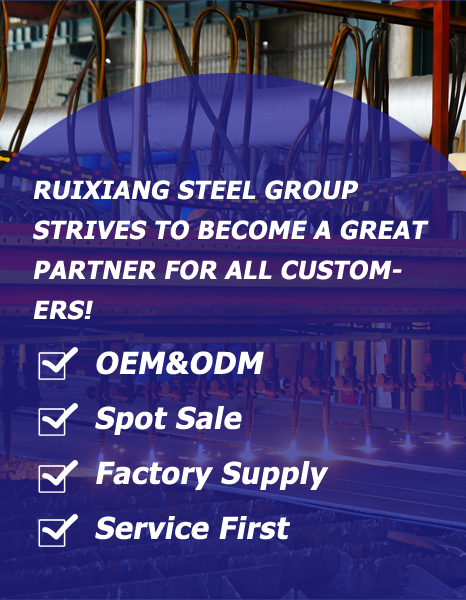Comprehensive Methods for Corrosion Protection on Steel StructuresCorrosion poses a significant threat to steel structures, potentially compromising their integrity, safety, and lifespan. Implementing effective corrosion protection strategies is essential for maintaining structural performance and reducing long-term maintenance costs. As a trusted steel supplier, Ruixiang Steel provides insights into comprehensive corrosion protection methods that ensure the durability of steel structures across various environments.
Protective Coatings and Painting SystemsSurface coatings form the first line of defense against corrosion:
Primers: Epoxy, zinc-rich, or red lead primers provide initial adhesion and corrosion inhibition
Intermediate coats: Build film thickness and enhance barrier protection
Topcoats: Polyurethane, acrylic, or alkyd finishes offer weather resistance and aesthetic appeal
Specialized coatings: Epoxy, vinyl, or chlorinated rubber systems for chemical exposure areas
Proper surface preparation through abrasive blasting to Sa 2.5 standard is crucial for coating adhesion and performance.
Hot-Dip GalvanizingThis process provides robust, long-lasting corrosion protection:
Complete coverage: Immersing steel in molten zinc creates a uniform protective layer
Cathodic protection: Zinc sacrificially protects steel even at damaged areas
Durability: Typically provides 50+ years of protection in most environments
Low maintenance: Minimal upkeep required compared to painted systems
Galvanizing is particularly effective for structural elements, fasteners, and components exposed to atmospheric conditions.
Metallic and Non-Metallic CoatingsVarious coating technologies offer specialized protection:
Thermal spray coatings: Zinc or aluminum applied via metallizing equipment
Electroplating: Thin metallic layers for specific corrosion resistance
Powder coating: Durable, uniform finish with excellent chemical resistance
Cladding: Bonding corrosion-resistant alloys to steel substrates
Design Considerations for Corrosion PreventionStructural design significantly impacts corrosion resistance:
Avoid moisture traps: Design for proper drainage and ventilation
Minimize crevices: Prevent areas where corrosive agents can accumulate
Accessibility: Ensure all surfaces can be inspected and maintained
Material selection: Choose appropriate steel grades for specific environments
Cathodic Protection SystemsFor structures in contact with electrolytes:
Sacrificial anodes: Zinc, aluminum, or magnesium anodes protect submerged or buried structures
Impressed current systems: External power source with inert anodes for large installations
Monitoring: Regular potential measurements to ensure system effectiveness
Environmental Control and MaintenanceProactive measures extend structure lifespan:
Regular inspections: Identify early signs of corrosion damage
Preventive maintenance: Address minor issues before they escalate
Environmental modifications: Dehumidification, chemical treatments, or drainage improvements
Record keeping: Document protection systems and maintenance history
Ruixiang Steel's Corrosion-Resistant ProductsWe supply steel products with enhanced corrosion resistance:
Weathering steel: ASTM A588 steel forms protective patina in atmospheric conditions
Stainless steel: Various grades for highly corrosive environments
Galvanized steel: Hot-dip coated products for immediate corrosion protection
Coated steels: Pre-finished materials with factory-applied protection
ConclusionEffective corrosion protection requires a systematic approach combining appropriate materials, protective systems, and maintenance practices. By implementing comprehensive corrosion prevention strategies, structure owners can significantly extend service life while reducing lifecycle costs. Ruixiang Steel supports these efforts by providing quality steel products and technical guidance tailored to specific environmental challenges and performance requirements.
 Click:162Edit: Admin
Click:162Edit: Admin Time:2025-10-07 19:18:18
Time:2025-10-07 19:18:18

